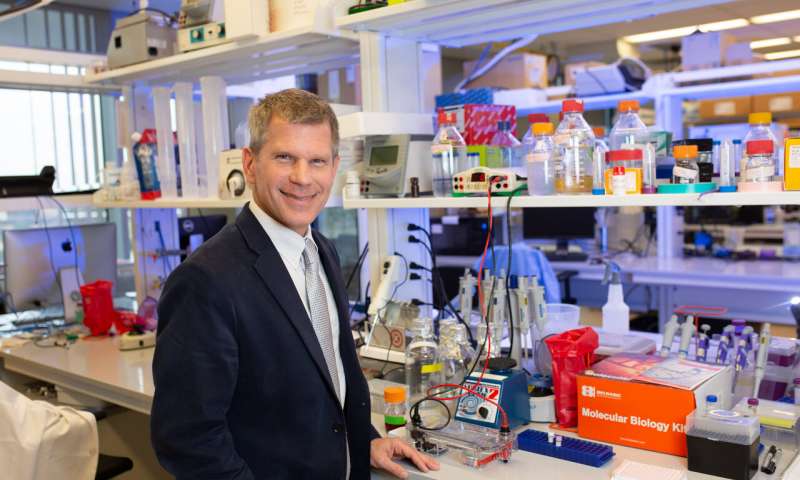Source: Thailand Medical News Dec 17, 2019 6 years, 3 weeks, 1 day, 15 hours, 11 minutes ago
Associate Professor of pharmacology, Dr Bradley McConnell from University of Houston is helping usher in a new age of
cardiac pacemakers by using
stem cells found in fat, converting them to heart cells, and reprogramming those to act as
biologic pacemaker cells. He is reporting his work in the
Journal of Molecular and Cellular Cardiology. The new
biologic pacemaker-like cell will be useful as an alternative treatment for conduction system disorders, cardiac repair after a heart attack and to bridge the limitations of the
electronic pacemaker.
 University of Houston associate professor of pharmacology Bradley McConnell is helping usher in a
University of Houston associate professor of pharmacology Bradley McConnell is helping usher in a
new age of cardiac pacemakers by using stem cells found in fat, converting them to heart cells, and
reprogramming those to act as biologic pacemaker cells. Credit: University of Houston
Dr McConnell told
Thailand Medical News, "We are reprogramming the cardiac progenitor cell and guiding it to become a conducting cell of the heart to conduct electrical current."
Dr McConnell's collaborators, Dr Robert J. Schwartz, Dr Hugh Roy and Dr Lillian Cranz Cullen Distinguished Professor of biology and biochemistry, previously reported work on turning the adipogenic mesenchymal stem cells, that reside in fat cells, into cardiac progenitor cells. Now those same cardiac progenitor cells are being programmed to keep hearts beating as a sinoatrial node (SAN), part of the electrical cardiac conduction system (CCS).
Typically, the SAN is the primary
pacemaker of the
heart, responsible for generating the electric impulse or beat. Native cardiac
pacemaker cells are confined within the SAN, a small structure comprised of just a few thousand specialized pacemaker cells. Failure of the SAN or a block at any point in the CCS results in arrhythmias.
Almost more than 650,000
electronic pacemakers are implanted in patients annually to help control abnormal heart rhythms. The small mechanical device is placed in the chest or abdomen and uses electrical pulses to prompt the heart to beat normally. In addition to having the device regularly examined by a physician, over time an
electronic pacemaker can stop working properly.
Dr McConnell added, "Batteries will die. Just look at your smartphone. This
biologic pacemaker is better able to adapt to the body and would not have to be maintained by a physician. It is not a foreign object. It would be able to grow with the body and become much more responsive to what the body is doing."
In order to convert the cardiac progenitor cells, McConnell infused the cells with a unique cocktail of three transcription factors and a plasma membrane channel protein to reprogram the heart cells in vitro.
Dr McDonnell added, "In our study, we observed that the SHOX2, HCN2, and TBX5 (SHT5) cocktail of transcriptio
n factors and channel protein reprogrammed the cells into
pacemaker-like cells. The combination will facilitate the development of cell-based therapies for various cardiac conduction diseases.”
The team has already started studies on animal models and plan a human trial as early as 2021.
Reference : Suchi Raghunathan et al. Conversion of human cardiac progenitor cells into cardiac pacemaker-like cells, Journal of Molecular and Cellular Cardiology (2019). DOI: 10.1016/j.yjmcc.2019.09.015
